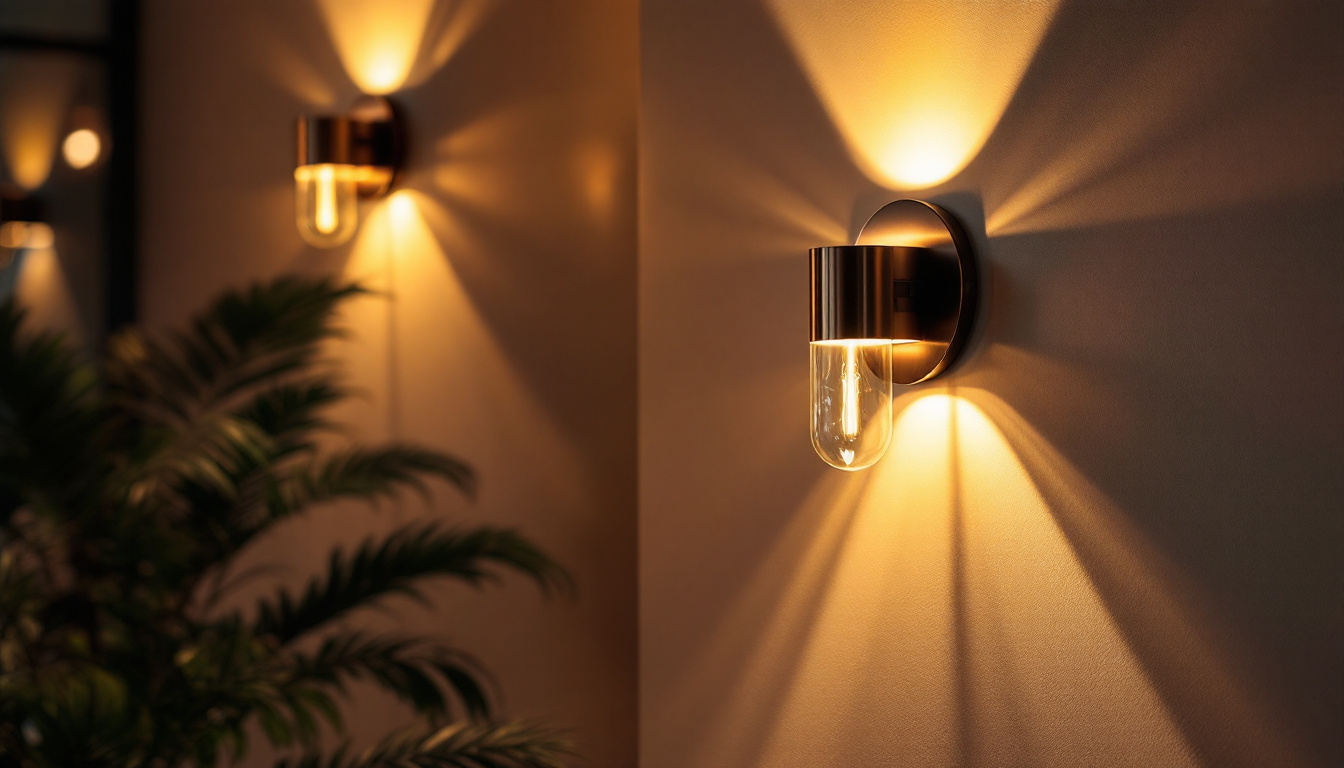
In the realm of lighting design and installation, the integration of technology has become increasingly vital. Among the various innovations, daylight sensors stand out as essential components for enhancing energy efficiency and optimizing lighting control. These devices not only contribute to sustainability efforts but also enhance the overall user experience in various environments. This article explores the importance of daylight sensors, their functionality, and how they can be effectively utilized in lighting projects.
Daylight sensors, also known as daylight harvesting sensors, are devices designed to detect the amount of natural light available in a given space. By measuring the intensity of daylight, these sensors can adjust artificial lighting accordingly, ensuring that spaces are adequately illuminated while minimizing energy consumption. This technology is particularly beneficial in commercial and residential settings where natural light can vary significantly throughout the day. The integration of daylight sensors not only promotes energy efficiency but also enhances the overall comfort and well-being of occupants by providing a more naturally lit environment.
At the core of a daylight sensor is a photodetector that measures light levels. When natural light enters a room, the sensor detects the intensity and sends signals to the lighting control system. If the ambient light exceeds a predetermined threshold, the system can dim or turn off the artificial lights, thereby conserving energy. Conversely, if natural light diminishes, the system can increase the artificial lighting to maintain a consistent illumination level. This dynamic adjustment not only helps in reducing electricity costs but also extends the lifespan of light fixtures, as they are not constantly operating at full capacity.
There are several types of daylight sensors available, each suited for different applications. The most common types include:
In addition to these common types, there are also smart daylight sensors that can be integrated into building management systems. These sensors not only adjust lighting but can also provide data analytics on energy usage and light levels over time. This information can be invaluable for facility managers looking to optimize energy efficiency and improve lighting quality. Furthermore, some modern systems can even interface with mobile applications, allowing users to customize their lighting preferences remotely, thus enhancing user control and comfort in various environments.
Another exciting development in daylight sensor technology is the use of advanced algorithms and machine learning. These systems can learn from the patterns of natural light throughout different times of the year and adjust lighting accordingly, creating a more responsive and adaptive lighting environment. This capability is particularly advantageous in regions with highly variable daylight conditions, where traditional sensors may struggle to maintain optimal lighting levels. As technology continues to evolve, the potential applications and benefits of daylight sensors will likely expand, making them an integral part of sustainable building design and smart home systems.
Incorporating daylight sensors into lighting projects offers numerous advantages that extend beyond mere energy savings. These benefits can significantly enhance the functionality and appeal of a space.
One of the most compelling reasons to use daylight sensors is their ability to reduce energy consumption. By automatically adjusting artificial lighting based on natural light availability, these sensors can lead to substantial savings on electricity bills. This is particularly relevant in commercial settings where lighting accounts for a significant portion of energy use.
Daylight sensors contribute to a more comfortable environment by ensuring that lighting levels are consistent throughout the day. Fluctuations in light can lead to discomfort and decreased productivity, particularly in workplaces. With the help of daylight sensors, spaces can maintain optimal lighting conditions, promoting a healthier and more enjoyable atmosphere for occupants.
Utilizing daylight sensors is a proactive step toward sustainability. By reducing reliance on artificial lighting, these devices help lower carbon footprints and contribute to greener building practices. Many organizations are increasingly prioritizing sustainability, and integrating daylight sensors can be a key component of achieving environmental goals.
Daylight sensors can be employed in a wide range of applications, making them versatile tools for lighting contractors. Understanding the various contexts in which these sensors can be used is crucial for maximizing their effectiveness.
In commercial settings, such as offices, retail stores, and warehouses, daylight sensors can play a pivotal role in managing lighting. For instance, in an open office environment, sensors can adjust lighting based on the amount of sunlight streaming through windows. This not only saves energy but also enhances the work experience for employees.
In residential settings, daylight sensors can be integrated into smart home systems. Homeowners can enjoy automated lighting that adjusts based on the time of day or weather conditions. This feature not only enhances convenience but also contributes to energy savings, making it an attractive option for eco-conscious consumers.
Daylight sensors are particularly effective in outdoor lighting applications. For instance, streetlights equipped with photocells can automatically turn on at dusk and off at dawn, ensuring that public spaces are illuminated only when necessary. This not only conserves energy but also reduces light pollution, benefiting both the environment and local wildlife.
While daylight sensors offer numerous benefits, there are challenges and considerations that lighting contractors should keep in mind when implementing these technologies.
Proper installation and calibration of daylight sensors are crucial for their effectiveness. If not positioned correctly, sensors may not accurately detect light levels, leading to inefficient lighting control. Contractors must ensure that sensors are placed in optimal locations and calibrated to respond appropriately to varying light conditions.
Although the initial investment in daylight sensors may seem high, the long-term energy savings can offset these costs. However, it is essential to conduct a cost-benefit analysis to determine the return on investment for specific projects. Understanding the potential savings can help in justifying the expense to clients.
When integrating daylight sensors into existing lighting systems, compatibility is a key consideration. Not all lighting fixtures are designed to work with sensors, and retrofitting may be required. Contractors should evaluate the existing infrastructure and recommend solutions that ensure seamless integration.
To maximize the benefits of daylight sensors, lighting contractors should adhere to best practices during the design and installation phases.
Before implementing daylight sensors, conducting a thorough lighting audit is essential. This process involves assessing the existing lighting conditions, identifying areas where natural light is abundant, and determining the appropriate sensor types for each space. A comprehensive audit can inform design decisions and ensure optimal sensor placement.
Educating clients about the benefits and functionality of daylight sensors is crucial for successful implementation. Many clients may be unfamiliar with this technology, so providing clear information can help them understand the value of investing in such systems. Highlighting energy savings, enhanced comfort, and environmental benefits can encourage clients to embrace these solutions.
After installation, monitoring the performance of daylight sensors is essential to ensure they are functioning as intended. Regular checks can help identify any issues that may arise, allowing for timely adjustments. Gathering feedback from occupants can also provide insights into the effectiveness of the system and inform future improvements.
The field of daylight sensing technology is continually evolving, with advancements that promise to enhance functionality and efficiency. Staying informed about these trends can help lighting contractors remain competitive and offer cutting-edge solutions to clients.
As the trend toward smart buildings continues to grow, the integration of daylight sensors with other smart technologies is becoming increasingly common. This integration allows for more sophisticated lighting control systems that can respond dynamically to changing conditions, optimizing energy use and enhancing occupant comfort.
Advancements in sensor technology are leading to improved accuracy and responsiveness. Newer sensors can differentiate between various light sources, allowing for more precise adjustments to artificial lighting. This level of accuracy can significantly enhance energy savings and user experience.
The incorporation of data analytics into daylight sensing systems is another emerging trend. By collecting and analyzing data on lighting usage and natural light availability, building managers can make informed decisions about energy management and lighting design. This data-driven approach can lead to further optimizations and cost savings.
Daylight sensors are an invaluable asset for lighting contractors looking to enhance the efficiency and effectiveness of their projects. By understanding the functionality, benefits, and best practices associated with these devices, contractors can provide clients with sustainable and user-friendly lighting solutions. As technology continues to evolve, staying abreast of trends in daylight sensing will ensure that lighting professionals remain at the forefront of the industry, ready to meet the demands of a changing landscape.
Incorporating daylight sensors not only aligns with energy-saving initiatives but also contributes to the overall well-being of occupants. As the world moves toward more sustainable practices, the role of daylight sensors in lighting design will only become more significant, making them a must-have for successful lighting projects.
Ready to elevate your lighting projects with the efficiency and sustainability of daylight sensors? At LumenWholesale, we offer an exceptional range of spec-grade lighting products that embody quality and affordability. Say goodbye to inflated markups and hello to unbeatable wholesale prices, all while enjoying the convenience of free shipping on bulk orders. Don’t compromise on performance—choose LumenWholesale for premium lighting solutions that meet the highest industry standards. Take the first step towards smarter, cost-effective lighting by visiting Wholesale Lighting at the Best Value today.

Discover how ceiling LED lights are revolutionizing the lighting industry for contractors.

Discover how lighting contractors are transforming spaces with wall light sconces through real-world success stories.

Explore the impact of commercial lighting sales on contractors’ profitability.

Discover the essentials of LED retrofit light fixtures and compliance standards in this comprehensive guide for lighting contractors.